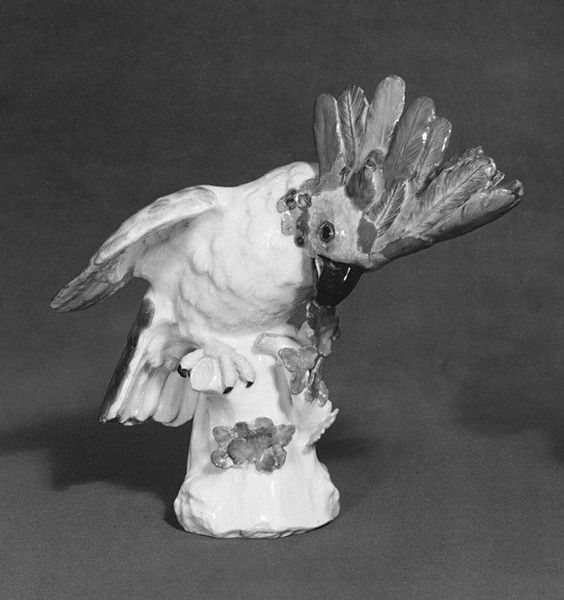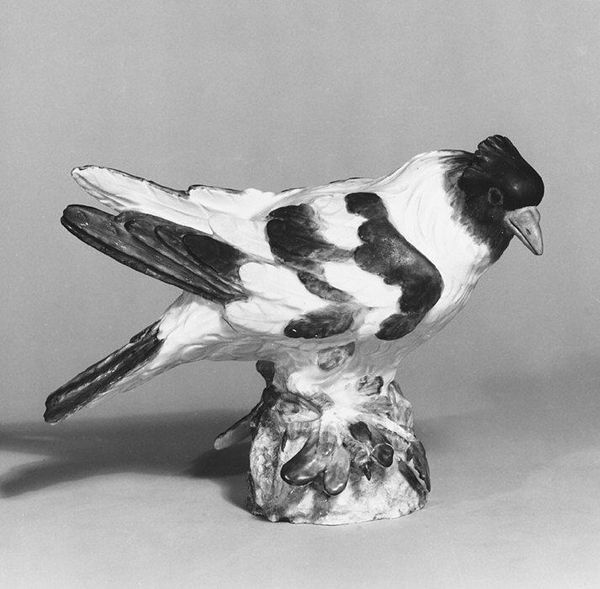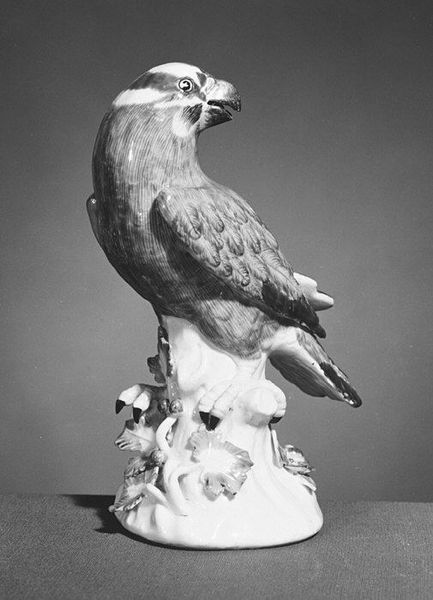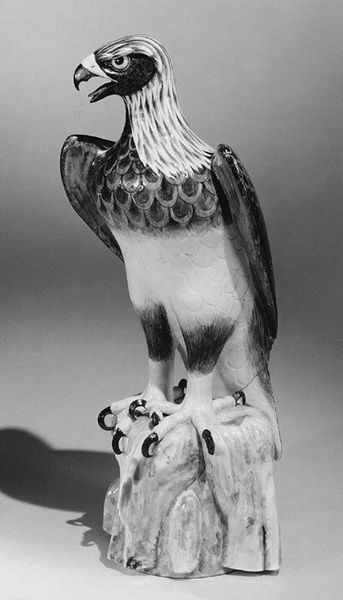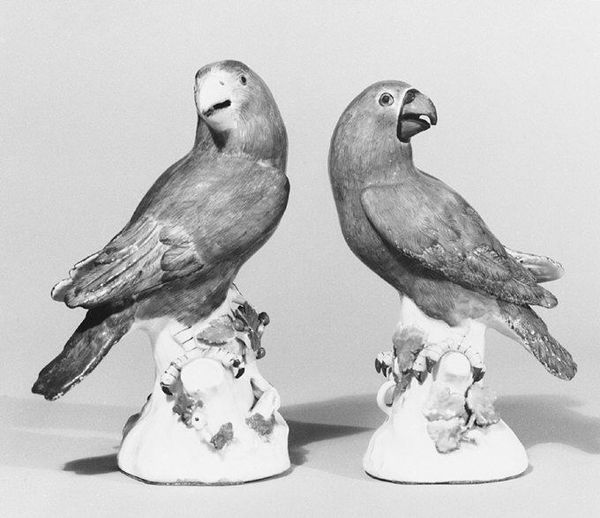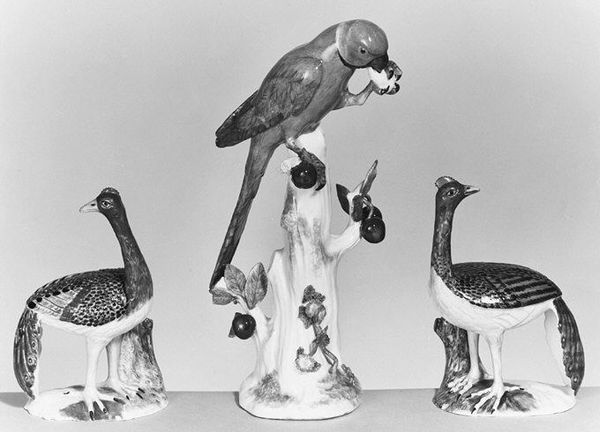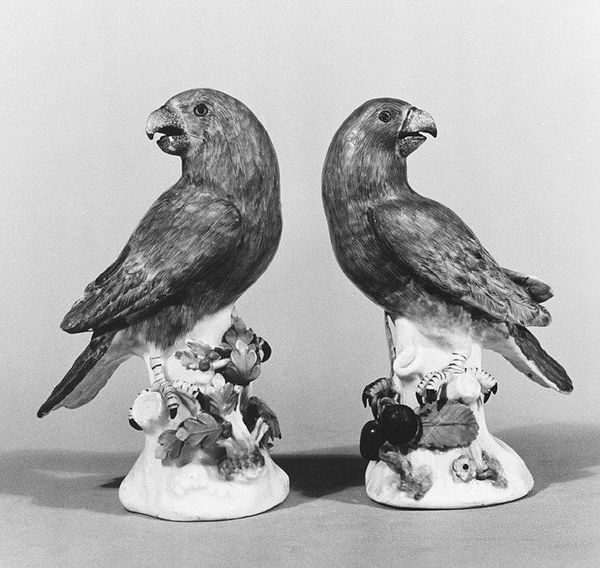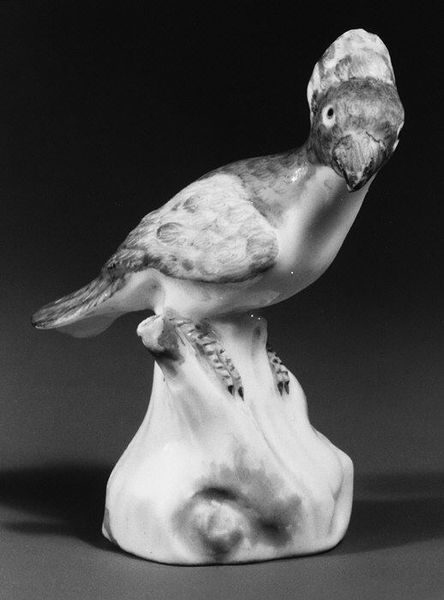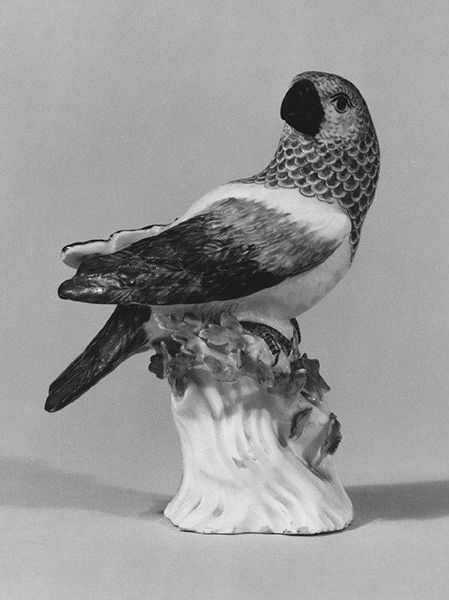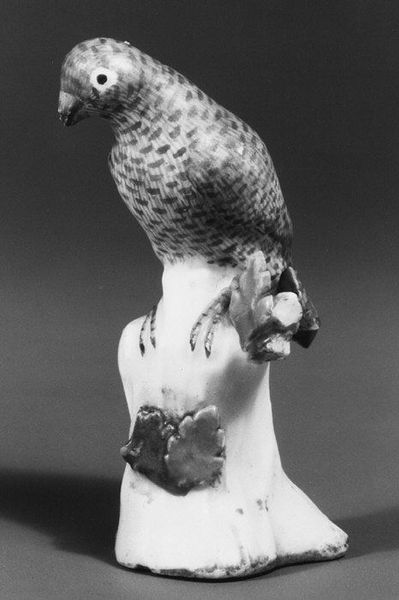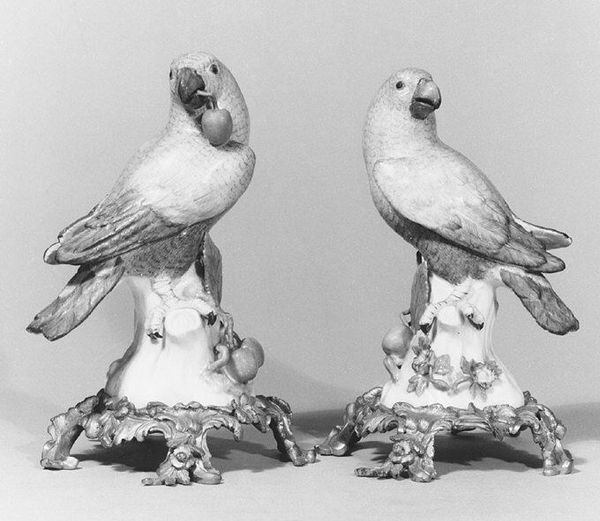
ceramic, porcelain, sculpture
#
sculpture
#
ceramic
#
porcelain
#
figuration
#
sculpture
#
decorative-art
#
rococo
Dimensions: Height: 7 1/2 in. (19.1 cm)
Copyright: Public Domain
Curator: Welcome. We’re standing before a charming porcelain sculpture titled "Parrot," created around 1740 by the esteemed Meissen Manufactory. Editor: My initial impression is one of subdued elegance. The subdued color palette almost tricks you into forgetting it’s a porcelain figure, emphasizing the sculpture's inherent form over pure surface decoration. Curator: The Meissen Manufactory, of course, played a crucial role in the history of porcelain in Europe, and this parrot exemplifies their artistry. It reflects the fashion for exoticism at the time. European courts and wealthy homes became showcases for imported goods and natural curiosities from far-flung lands. This parrot captures that obsession with the rare and the unknown. Editor: Absolutely, and it’s hard not to consider how this "parrot mania" played out in terms of power and privilege. Exotic animals like this became symbols of imperial reach and control, speaking volumes about the socio-political climate of the 18th century. I find the muteness in color interesting. Perhaps it represents the removal from the animal's environment; it represents a taming of something more savage. Curator: Precisely! What you see here is actually a careful orchestration of glaze techniques to suggest depth and texture. Even with the more neutral tones, the artist conveys the bird’s plumage. Porcelain birds were luxury goods, highly prized and prominently displayed as statements of wealth and status. They were also, it's believed, part of elaborate table decorations during banquets. Editor: I do feel a kind of dissonance appreciating this beautiful sculpture in a modern context. It’s so easy to be seduced by its charm, without fully reckoning with its original function as a symbol in an elaborate economy built on colonialism. As with much art from the period, this piece requires active interrogation. We must be mindful of how the seemingly innocent aesthetic pleasures connect to broader social and historical structures. Curator: It makes us question the visual language we now place onto historical imagery. Editor: Right, engaging with art, then, involves active inquiry and critical consideration of the stories it silently carries, and the context of its production and initial reception. It gives me lots to consider and examine, which is an exciting process of discovery in itself!
Comments
No comments
Be the first to comment and join the conversation on the ultimate creative platform.
